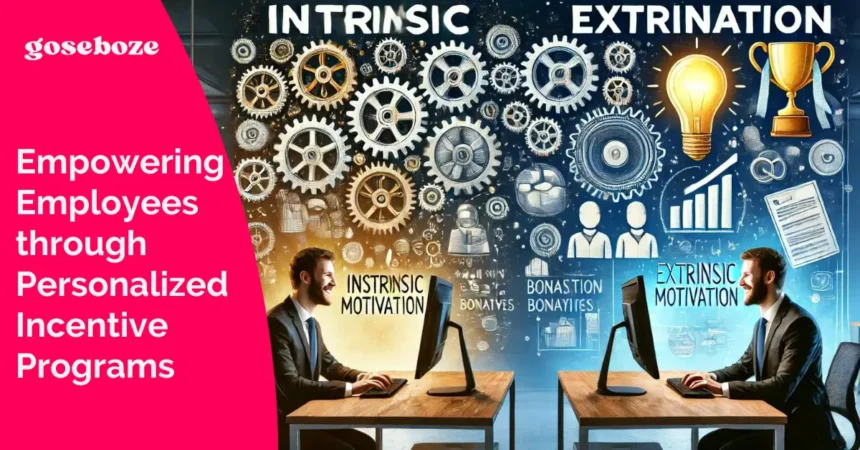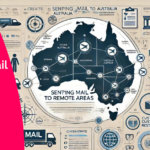Introduction
In the business world, incentive programs have emerged as a powerful tool to motivate and reward employees who exceed expectations. Personalized incentive programs allow companies to customize rewards based on individual performance, which has been shown to increase productivity, boost morale, and reduce turnover. In this blog post, we will explore the benefits of personalized incentive programs and how they can help empower employees to achieve their full potential.
Understanding Employee Motivation
To design an effective personalized incentive program, it is important to understand what motivates employees. Generally, employees are motivated by both intrinsic and extrinsic factors. Intrinsic motivation comes from within the individual, such as the satisfaction that comes from doing a job well or achieving a challenging goal. Extrinsic motivation, on the other hand, comes from external rewards, such as bonuses, promotions, or other tangible benefits.
Most employees are motivated by a combination of intrinsic and extrinsic factors. To design an effective incentive program, it is important to strike a balance between these two factors. It is also crucial to understand that every employee is unique, with their own set of motivations, goals, and career aspirations.
Read Also: 5 Practical Tips After Having Internships Abroad
Designing Personalized Incentive Programs
A personalized incentive program is a rewards program that is tailored to each individual’s goals, preferences, and performance. Such programs can take many forms and may include bonuses, promotions, time off, or other rewards. Here are five steps to design a personalized incentive program:
- Identify individual goals: Conduct one-on-one meetings with each employee to learn about their goals and career aspirations. This information will help you design incentives that are aligned with their motivations.
- Understand preferences: Different employees are motivated by different rewards. For example, some may prefer cash bonuses or promotions, while others may value more time off or racing hospitality packages. It is important to understand and cater to these individual preferences.
- Create a tiered system: One effective way to incentivize employees is to create a tiered system that rewards them for achieving specific goals or levels of performance. For example, you might offer a small bonus for meeting a sales quota, a larger bonus for exceeding the quota, and a promotion for consistently exceeding expectations.
- Offer non-monetary rewards: While financial incentives are important, many employees are also motivated by non-monetary rewards, such as recognition, flexible work arrangements, or professional development opportunities. Offer a range of incentives to cater to different preferences.
- Get feedback: To continually improve your incentive program, it is important to gather feedback from employees. Use surveys or other feedback mechanisms to learn what is working well and what could be improved.
Implementing Personalized Incentive Programs
Once you have designed a personalized incentive program, the next step is to implement it successfully. Here are five steps to do so:
Communicate clearly: It is important to communicate the details of the program clearly and transparently to all employees. Provide a clear explanation of how rewards will be earned and what is expected of employees.
Train managers: Managers play a key role in implementing a personalized incentive program. Train managers on the details of the program, how to accurately track employee performance, and how to provide feedback to employees.
Track and monitor performance: Accurate tracking and monitoring of employee performance is crucial to the success of the incentive program. Use data to track progress towards individual goals and to identify opportunities to further motivate employees.
Celebrate successes: Recognize and celebrate employee successes openly, and provide immediate feedback and rewards when goals are achieved. This will increase the visibility and impact of the incentive program.
Continuously improve: Gather feedback from employees and managers and use it to continuously improve the program. Be flexible and willing to make changes where necessary to ensure the program is effective.
Measuring the Impact of Personalized Incentive Programs
It is essential to measure the impact of a personalized incentive program to assess its success and to identify areas for improvement. Here are five ways to measure the impact of a personalized incentive program:
- Track employee engagement: Use employee engagement surveys to measure the impact of the program on employee satisfaction, motivation, and retention.
- Measure performance: Track individual performance data to assess the program’s impact on achieving specific business objectives.
- Monitor turnover: Assess whether the program has helped to reduce turnover rates among employees.
- Analyze costs: Analyze the costs associated with the program, such as the cost of rewards, to determine the program’s overall impact on the organization.
- Gather feedback: Use surveys and other feedback tools to gather employee and manager feedback on the program’s effectiveness, and use the information to make informed decisions about program improvements.
Overcoming Challenges
While personalized incentive programs can be highly effective, there are several challenges that organizations may face when implementing these programs. Some of the most common challenges include resistance to change, difficulty in measuring individual performance, and a lack of resources to manage the program. To overcome these challenges, it is important to plan and to get buy-in from all stakeholders. Use data to measure the program’s impact, and be flexible and willing to adjust the program as needed.
Conclusion
Personalized incentive programs can be a powerful tool to motivate and reward employees, and to help them achieve their full potential. By understanding what motivates individual employees and designing rewards that align with their goals and preferences, organizations can create a more engaged, productive, and motivated workforce. To implement a successful personalized incentive program, it is crucial to communicate effectively, track performance accurately, and measure the program’s impact regularly. With careful planning and execution, personalized incentive programs can help organizations stay competitive, reduce turnover rates, and improve overall business performance.








